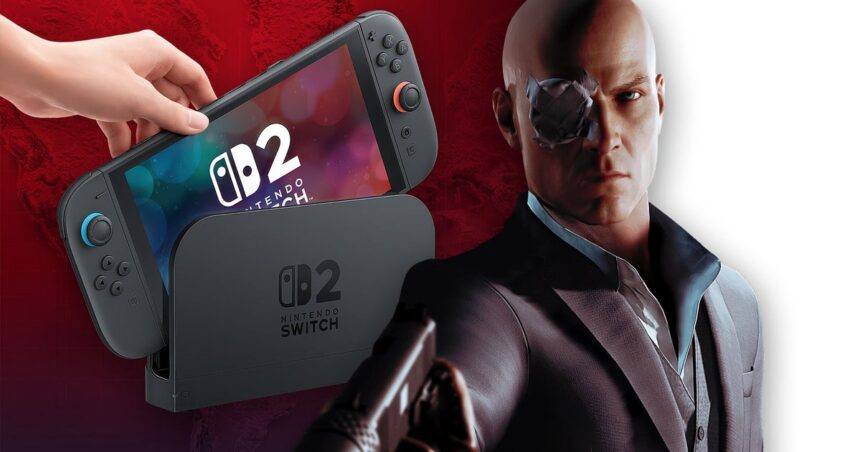We’ve not had the chance to play every Switch 2 game in-depth owing to the sheer volume of them and regrettably, one of the titles we’ve not been able to look at in depth is Io Interactive’s classic Hitman: World of Assassination. That’s a bit of a shame as it has a fascinating characteristic – its rendering resolution and performance changes according to how the Switch 2’s front-end menus are set, leading to anything up to a 62.5 percent performance increase based on our testing. There’s no in-game mention of this and certainly no in-game performance mode and yet there it is.
The story begins with an email I received last month from Harry Mingham: “Hitman: World of Assassination on Switch 2 runs around 30-45 fps around 90 percent of the time. Out of curiosity, I went into the system settings and changed the TV output res from 4K to 720p, went back into the game and found it vastly improves performance. The Hawkes Bay Mission ran at… a very solid and stable frame-rate”. In fact, depending on the content, Hitman: World of Assassination can run at up to 60 frames per second with the console set to 720p, dropping into the mid 40s on more demanding scenes.
In putting this to the test, I chose to capture scenes from Paris, Mumbai, Berlin and Whittleton Creek at 720p, 1080p and 4K resolution – as dictated by the Switch front-end. Based on prior testing on other systems, I’ve found Berlin and Whittleton Creek to be GPU-intensive, while the proliferation of NPCs in Paris and Mumbai may help us to identify areas where Switch 2 may be CPU-limited. The results are intriguing.
Focusing on Whittleton Creek gives us our biggest frame-rate differentials. 4K averages 46.88fps, rising to 40.45fps with Switch 2 set to 1080p, rising again to 59.93fps at 720p. So, performance increases by 9.7 percent dropping from 4K to 1080p (which sounds a little low), while 720p is 62.5 percent ahead of 4K and 48.2 percent faster than 1080p. So, what’s going on? Well, setting the system to 720p seems to be producing a straight 720p image, allowing for a much higher frame-rate.
Things get more interesting at 1080p, however, as the game actually seems to be rendering at a slightly higher resolution, with pixel counts suggesting 1152p to 1188p. Meanwhile, with Switch 2 set to 4K, performance drops but pixel counts are still in the same 1152p/1188p window. The performance drop may be down to upscaling to a higher resolution with an approximate cost of around 2.4ms compared to what we assume is the same content without any upscaling. Maybe the game is using DLSS to upscale, as there are rounded edges where we’d expect to see aliasing. We’re looking into this in a little more depth and have also asked Io Interactive for comment.
Moving on to our other test scenes, Berlin delivered similar differences between resolutions – 720p system output resolution is 61 percent faster than 4K, while “1080p” is seven points clear of 4K. This is a slightly more demanding scene than Whittleton Creek with 720p averaging 55.1fps, 1080p at 36.7fps and 4K at 34.26fps.
To see this content please enable targeting cookies.
In the stages chosen for CPU testing, there’s expected behaviour – in scenes crammed with NPCs, the performance differentials between the three graphics modes close up significantly. Certain areas of the Paris stage can still see some wide gaps but as soon as Agent 47 takes his place in the packed fashion show, frame-rates converge somewhat – 42fps at 720p plays 39fps at “1080p” and 35fps at “4K”. 720p should be higher but the bottleneck shifts from a GPU limitation to the CPU instead. Frame-rates also close up in Mumbai for similar reasons.
For the end user then, there are a couple of takeaways here: firstly, you can effectively max out frame-rates by dropping to 720p – the main problem being that the very noticeably lower resolution is not exactly a good look for the game. For 4K display owners, you can increase frame rate by around nine percent simply by changing the system menu to 1080p – though it does appear to be at the expense of upscaling. From the Digital Foundry perspective though, the “4K” mode is worth further investigation – since pixel counts seem much the same as the “1080p” mode, we might finally be able to get a grip on the computational cost of DLSS on the Nintendo hybrid.
There is the sense that these resolution/frame-rate shifts are not intended behaviour, however, as what is an effective “performance mode” would be something you’d expect the developer to have as an option in the menus. Game modes being tied to system settings isn’t new – PS4 Pro was notorious for different 1080p and 4K modes – but seeing those changes kick in dynamically during gameplay as opposed to just when the game boots is something new for a home console. One of our backers on the DF Supporter Program pointed out that Switch and Switch 2 do this all the time “switching” between docked and portable play, so maybe that’s part of the explanation here.
Hopefully, we’ll get some clarification from Io Interactive soon.





